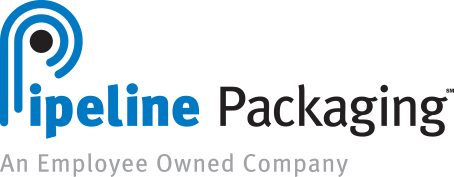Like many other trades, the COVID-19 pandemic has had a major impact on the packaging industry. Companies around the country are affected by a shortage of bottles, closures, and other packaging products, with lead times of around 40 weeks for some packaging products.
While the pandemic has impacted businesses everywhere, it’s critical that businesses get the packaging they need to continue production. Let’s break down the reasons why the packaging shortage has reached this point and what businesses can do to navigate around the current state of packaging lead times.
The Reasons Behind the Current Packaging Shortage
Like many shortages, the current excessive lead times are a direct result of supply and demand. The difference between this packaging shortage is that it stems from a surge in hand sanitizer and disinfect packaging related to the pandemic.

This huge influx in demand first affected a variety of smaller containers, such as 4, 8, and 12 oz. PET bottles for pocket hand sanitizer. The problem was that as more businesses produced these products, they were forced to use larger bottles to get around the lack of typical hand sanitizer and disinfectant packaging. Pretty soon, businesses were sourcing everything up to 55-gallon drums to accommodate demand. The search for new options had a ripple effect on the rest of the packaging industry.
The shift in rigid packaging demand for sanitizers to address the COVID pandemic has had a direct impact on the availability of packaging supplies and components. Lead times on certain bottle sizes, closures, dispensing items, and others have all hit record capacities and lead times of 20 plus weeks are now common. Certain commodities like trigger sprayers are out to early 2022, while steel, tin, and aluminum packaging faces delays due to record demand and production issues.
4 Ways to Navigate Around the Packaging Shortage
Simply put, the packaging shortage is putting a major strain on businesses across the country. The majority of businesses are typically look for lead times of four-to-six weeks, and that’s if they don’t require immediate demand out of a warehouse. That’s why it’s imperative for businesses to work with their packaging suppliers to come up with alternative solutions.
Fortunately, there are potential options to help accommodate packaging needs. Pipeline Packaging actively works with customers to identify new solutions to circumvent extreme lead times to ensure that each business gets the packaging it needs in a timely fashion. Of course, these solutions can vary depending on each company’s needs. Here are four potential solutions for addressing the packaging shortage.
Identify new sources for packaging products
When one manufacturer isn’t able to accommodate a business’ needs, it’s time to look for another source. Pipeline has strong relationships with more than 400 packaging manufacturers and actively scours the globe for additional opportunities further down the sourcing chain.
These sources can come in many different forms – other distributors, international resources, etc. The key is whether they can provide cost-effective packaging that accommodates certain timelines. By expanding our sourcing network, Pipeline can find additional sources to expand a business’ options and identify a more suitable packaging solution.
This search for new sourcing solutions also extends beyond finding new manufacturers. Pipeline also works to uncover new supply chain solutions that can lower estimated lead times. For example, we can work with international supplier to bring in product direct from overseas to circumvent supply issues found within the U.S. and help businesses get the packaging they need when they need it.
Alternative packaging options
If a certain bottle, closure, or other packaging product isn’t available, there are alternatives available. Pipeline Packaging works with businesses to adjust their packaging to containers and closures that are more readily available and still works for your products and processes.
The key to this process is to identify new packaging solutions that stay within a set framework for production and product identification. There are several criteria for this process, ranging from the color of your container to how the shape and softness affect the labeling process. Finding a potential alternative that meets your criteria can dramatically lower your lead times. For example, a plastic carafe bottle is a much more accessible replacement for a trigger sprayer bottle with an offset neck.
Of course, it’s not easy to accommodate different packaging needs. That’s why Pipeline’s experts work with you to address the factors that simply can’t change. Our team can develop and test alternatives for compatibility to give businesses options instead of struggling to accommodate long lead times for a product that numerous other companies also want.
Switch to custom packaging
Another potential route to avoid lengthy lead times on in-demand packaging is to invest in a custom solution. While industrial rounds and other stock bottles are hard to find, you can start from scratch to create packaging that isn’t booked out until 2022.
The key to a custom packaging approach is find the right manufacturer that can fit your orders into their production schedule. Pipeline works with businesses to design custom packaging and find opportunities to fit their custom packaging into these schedules.
One method is to find bottles manufacturers are currently at capacity with and make slight adjustments to customize them. Something as small as changing the neck finish can give you ownership of a bottle and make it more likely that a manufacturer can squeeze your new packaging into production.
Plan ahead with packaging logistics and warehousing
One way to stave off the constant aggravation of dealing with lengthy lead times is to plan your orders in advance. Utilizing packaging logistics and a contract storage solution can help businesses offset reorder lead times and ensure they have the inventory available to continue production on schedule.
At Pipeline, our experts work with businesses to plan their annual usage and help ensure a continual flow of containers and closures. By ordering in larger quantities, businesses can get the buffer they need to accommodate lengthy lead times. Pipeline can warehouse the excess packaging and stagger order based on usage so that inventory arrives when it’s needed. That advance planning is a major benefit when dealing with the uncertainty of the current packaging shortage.
A Secure Source of Quality Packaging
Supply chain shortages are a major issue. At Pipeline Packaging, our goal is to determine the best, most cost-effective packaging solution for your business, even with a global packaging shortage.


